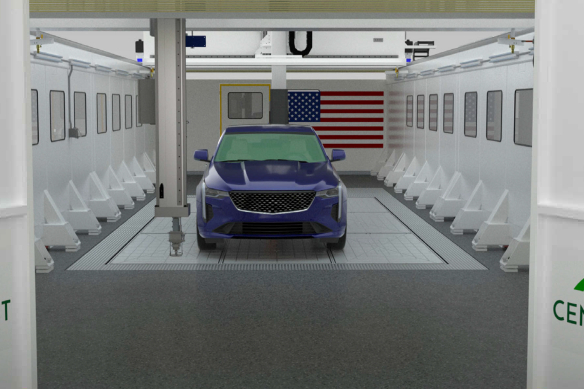Polymer additive system, services bridge the gap between design and manufacturing
CAMX 2023: Center Street Technologies’ large-scale hybrid 3D printer, paired with its advanced manufacturing confluence (AMC) system, provides a comprehensive additive/subtractive process flow on a single system.

Photo Credit: Center Street Technologies
Center Street Technologies (CST, Youngstown, Ohio, U.S.) operates a large-scale hybrid polymer manufacturing machine with a build volume of 8 × 12 × 24 ft. The company has development a fully integrated advanced manufacturing confluence (AMC) system that incorporates additive manufacturing, in-situ geometric scanning and machining capabilities all within one machine. According to CST, this enables rapid production and quality assessments of sophisticated, massive-scale, high-value products of interest to the Department of Defense (DOD) and non-DOD customers. Having a single platform eliminates the need for intermediate steps, making the overall process more cost-effective and the lead times shorter, according to the company. The AMC system provides a comprehensive process flow from customer requirements, through design to final part shipment.
CST also uses a model-based definition (MBD) approach throughout the AMC process. The digital MBD approach enables an authoritative digital definition of a product in the 3D master model that drives the additive/subtractive manufacturing processes of the AMC system and provides the baseline for the in-situ, 3D laser scanned, “as-manufactured” digital twin. Advanced simulation tools are an integral part of the MBD approach that help predict material behavior during processing, and custom, closed-loop systems developed in-house offer seamless operation ensuring the highest product quality. CST has the capability of producing parts for various applications demanding high performance in a rapid development environment, highlighting the advantages of the AMC process over conventional manufacturing approaches.
Moreover, CST’s ability to establish catalog materials specific to large-format additive manufacturing and evaluate these polymers with an emphasis on final product material response enables significant reduction in process development cycles.
CST will feature customer/example parts and tooling for various applications at its CAMX booth. Product display ranges from free-formed geometries to performance-enhancing applications such as composite tooling produced by different materials.
CST’s efforts toward developing a digital twin for large-scale polymer additive manufacturing will be presented in poster format.
Related Content
-
Manufacturing the MFFD thermoplastic composite fuselage
Demonstrator’s upper, lower shells and assembly prove materials and new processes for lighter, cheaper and more sustainable high-rate future aircraft.
-
Sulapac introduces Sulapac Flow 1.7 to replace PLA, ABS and PP in FDM, FGF
Available as filament and granules for extrusion, new wood composite matches properties yet is compostable, eliminates microplastics and reduces carbon footprint.
-
Plant tour: Joby Aviation, Marina, Calif., U.S.
As the advanced air mobility market begins to take shape, market leader Joby Aviation works to industrialize composites manufacturing for its first-generation, composites-intensive, all-electric air taxi.















